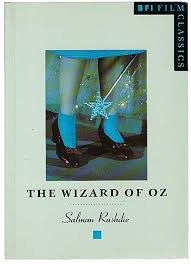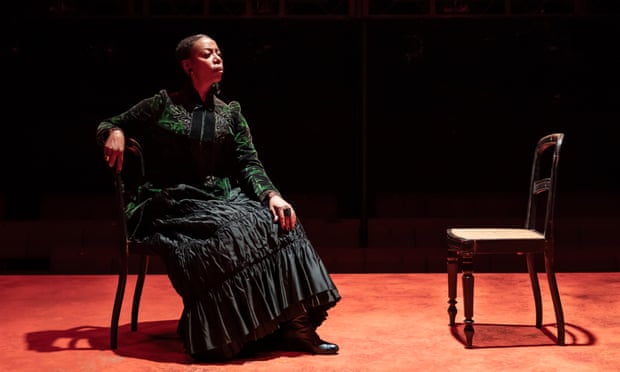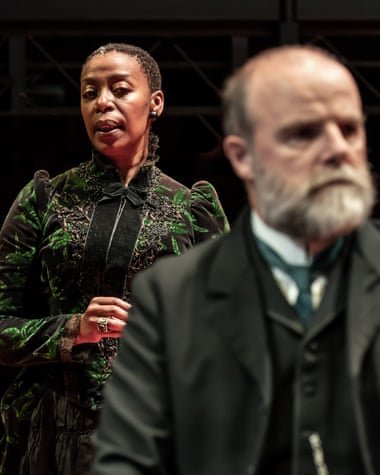At the Auction of Ruby Slippers by Salman Rushdie
Q. How does the auction of the ruby slippers satirize consumerism and the commodification of desires and cultural artifacts?
A. The auction of the ruby slippers in the provided text serves as a potent satire of consumerism and the commodification of desires and cultural artifacts in several ways.
-
Commodification of the seemingly priceless: The auction itself, as stated in the analysis, symbolizes the commodification of everything, including personal identity, memories, and emotions. The fact that an object like the ruby slippers, imbued with cultural significance and the promise of magic, is being auctioned off alongside other items highlights how nothing is considered inherently beyond the reach of market forces. As the analysis on commodification points out, the story critiques the power of market capitalism to monetize all spheres of life.
-
Bidding on desires and intangible concepts: The bidders' motivations for wanting the slippers go beyond mere possession. They desire protection from witches, a return to a lost normalcy, and a sense of the miraculous. The protagonist specifically wants them to win back his lost love, Gale, and even dreams of using them to rescue a stranded astronaut. This illustrates how even intangible desires like love, security, and hope are being channeled through the acquisition of a material object. The text also mentions the past auctioning of "human souls" and "state secrets," further emphasizing the extreme commodification of non-material entities.
-
The nature of the bidders: The diverse and often eccentric group of bidders – movie stars, memorabilia junkies, political refugees, religious fundamentalists, orphans, and even imaginary beings – underscores the widespread nature of this consumerist obsession. Each group projects their specific longings and fantasies onto the ruby slippers. For instance, orphans hope for reunification with deceased parents through time travel, and political refugees seek invulnerability. The presence of "memorabilia junkies" willing to risk their lives for a touch of the slippers showcases the extreme and irrational devotion to consumer artifacts.
-
The auction house as a microcosm of society: The Grand Saleroom is described as "the beating heart of the earth," where "all the wonders of the world will pass by". This suggests that the auction house is a microcosm of a society where everything, from iconic landmarks to personal relationships, is potentially for sale. The detailed descriptions of the attendees' behaviors – the fighting, the drooling, the seeking of psychiatric help – satirize the often-absurd and desperate lengths people go to in pursuit of their desires within a consumerist framework.
-
Loss of inherent value: The analysis on commodification discusses "commodity fetishism," where objects are divorced from their original context and their worth is reduced to exchange value. The ruby slippers, originally a symbol within a fictional narrative, are now valued solely for their potential to fulfill personal desires, regardless of their intrinsic meaning. Similarly, artworks are worn as fashion accessories, stripping them of their cultural and artistic significance.
-
The protagonist's disillusionment: The protagonist's ultimate realization that his desire for Gale, fueled by his hope in the slippers, is a "fiction" and that he can simply walk away from the bidding highlights the emptiness at the heart of this consumerist pursuit. His "floating away from our desires" suggests that the intense focus on acquiring the object temporarily obscured the true nature and value of his longings.
In essence, the auction of the ruby slippers exaggerates and distorts the principles of consumerism, presenting a world where desires, cultural artifacts, and even fundamental aspects of human existence are reduced to commodities to be bought and sold. The extreme behaviors and motivations of the auction attendees, along with the setting itself, serve as a satirical critique of a society obsessed with material acquisition as a means to fulfill deeper, often unmet, needs.
Q. Analyze the use of magic realism in Salman Rushdie's "At the Auction of the Ruby Slippers". How does this technique enhance the story's themes and impact?
A. Salman Rushdie's "At the Auction of the Ruby Slippers" masterfully employs magic realism, seamlessly blending fantastical elements with a recognizable reality to enhance its thematic depth and impact.
Magic realism, in this context, refers to the integration of magical or surreal elements into an otherwise ordinary setting, treated as a normal part of that reality. In "At the Auction of the Ruby Slippers," this technique is evident in several key aspects:
-
The Nature of the Ruby Slippers: The slippers themselves possess unexplained and potentially limitless magical powers. Bidders believe they can offer protection from witches, reverse metamorphosis, restore a lost normalcy, and even function as time and space machines to reunite orphans with deceased parents. This central magical object drives much of the plot and the bidders' fervent desires.
-
Auras of Movie Stars: The description of movie stars possessing visible auras with specific colors and properties, developed with "masters of Applied Psychics," is a clear instance of magic realism. These auras have a tangible effect, knocking down anyone who collides with them, policed by security teams.
-
The Presence of Imaginary Beings: The auction is attended by children from nineteenth-century Australian paintings, a literary character bidding in writing, and a frail alien creature appearing on a television monitor. Their integration into the saleroom alongside human bidders blurs the lines between reality and fiction.
-
The Auctioning of the Intangible: The Grand Saleroom is a place where not only physical objects like the Taj Mahal and the Statue of Liberty are auctioned, but also "wives and the purchase of husbands," "state secrets," and even "human souls". This commodification of non-material entities elevates the story beyond mere realism into a realm where the logic of the market extends to the metaphysical.
How Magic Realism Enhances the Story's Themes:
-
Consumerism and Commodification: The magical elements amplify the satire of consumerism. The auctioning of something as fantastical as the ruby slippers alongside mundane or even abstract entities underscores the story's critique that in this world, everything, including desires and cultural artifacts, is reduced to a commodity with a price tag. The intense and often absurd reactions of the bidders to the slippers, driven by their belief in its magical properties, mirror the irrational desires fueled by consumer culture. As the analysis of commodification states, the story critiques the power of market capitalism to monetize all spheres of life.
-
Escapism and Fantasy: The magical powers attributed to the ruby slippers and the presence of fictional characters directly address the theme of escapism and the power of imagination. In a bleak and troubled world, people seek refuge and solutions in the fantastical promises offered by the slippers. The appearance of characters from paintings and literature highlights the "permeation of the real world by the fictional," reflecting a desire to escape a damaged reality. As the analysis on escapism notes, these elements represent a "subversive rejection of soul-crushing reality" and a glimpse at imagination's potential.
-
Disillusionment and Loss of Meaning: The juxtaposition of the magical and the mundane can highlight the spiritual emptiness of the society depicted. While the ruby slippers offer the promise of the miraculous, the reactions of the bidders and the overall atmosphere of the auction suggest a deeper malaise. The narrator's eventual disillusionment, even as he is on the verge of acquiring the magical slippers, underscores the idea that material or even seemingly magical solutions cannot fulfill deeper human longings.
-
Social Commentary and Satire: Magic realism allows Rushdie to deliver a more potent and surreal social critique. The exaggerated reactions of the bidders (the hysteria, the violence, the suicides in the name of adoration) become a satirical commentary on societal obsessions and the absurdity of human behavior. The presence of marginalized groups like tramps and exiles alongside the fantastical elements sharpens the critique of social divisions and inequalities. The "funhouse mirror" of magic realism exaggerates societal deformities, making them more visible and open to interrogation. For example, the religious fundamentalists' desire to burn the slippers, while extreme, satirizes the clash between faith and the fetishization of objects.
Impact of Magic Realism:
The use of magic realism in "At the Auction of the Ruby Slippers" has a profound impact on the reader:
- It creates a sense of the uncanny and the absurd, challenging the reader's perception of reality and highlighting the strangeness of familiar social phenomena.
- It blurs the boundaries between the real and the imaginary, forcing the reader to question what is truly valuable and meaningful in a world where even magic is for sale.
- It heightens the emotional and thematic resonance of the story. The fantastical elements often serve as metaphors for deeper human desires, anxieties, and the state of society.
- It allows for a more vivid and memorable critique of contemporary culture. The surreal imagery and events linger in the reader's mind, prompting reflection on the themes of consumerism, escapism, and the search for meaning.
In conclusion, the magic realism in "At the Auction of the Ruby Slippers" is not merely a stylistic flourish but an integral element that significantly enhances the story's satirical edge, thematic exploration, and overall impact on the reader. By blending the fantastical with the mundane, Rushdie crafts a powerful and thought-provoking commentary on the obsessions and anxieties of modern society.
Glossary of Key Terms
- Auctioneers:
The organizers and facilitators of the auctions, portrayed as powerful
figures overseeing the commodification of various items and concepts.
- Ruby
Slippers: The central object of desire in the story, symbolizing
power, escapism, and the longing for a return to a perceived state of
normalcy or "home."
- Memorabilia
Junkies: Individuals obsessed with collecting items associated with
famous people or events, highlighting extreme forms of consumerism and
fandom.
- Auras:
In this context, visible emanations surrounding individuals, particularly
movie stars, developed through "Applied Psychics," suggesting a
manufactured form of celebrity and status.
- Political
Refugees: Individuals displaced due to political upheaval, present at
the auction potentially seeking new identities or a return to a lost past.
- Fundamentalists:
Religious extremists who oppose the perceived idolatry of the ruby
slippers and seek to destroy them, representing a clash between
materialism and spiritual beliefs.
- Imaginary
Beings: Fictional characters or figures from art who inexplicably
appear at the auction, blurring the lines between reality and fantasy and
commenting on the power of imagination.
- Commodification:
The process of turning something into a commodity that can be bought and
sold, a central theme illustrated by the auctioning of diverse and even
intangible items.
- Nietzschean:
An allusion to the philosophy of Friedrich Nietzsche, often associated
with concepts of nihilism, the death of God, and the individual's will to
power, possibly reflecting the story's disillusioned and relativistic
worldview.
- Fetishising:
Treating an object as having magical powers or as being an object of
obsessive devotion, as seen in the attendees' intense focus on the ruby
slippers.




.jpeg)


.jpeg)



